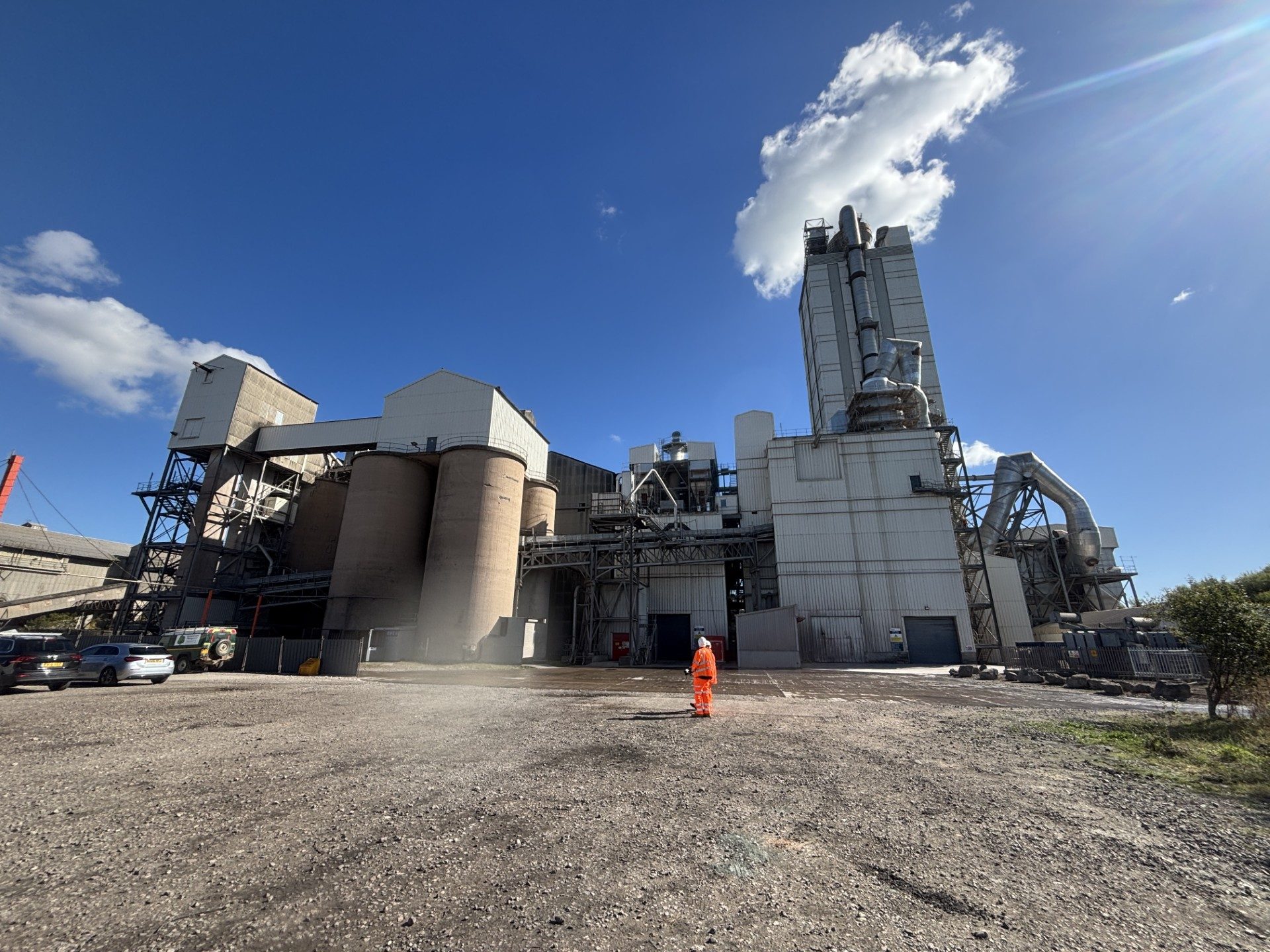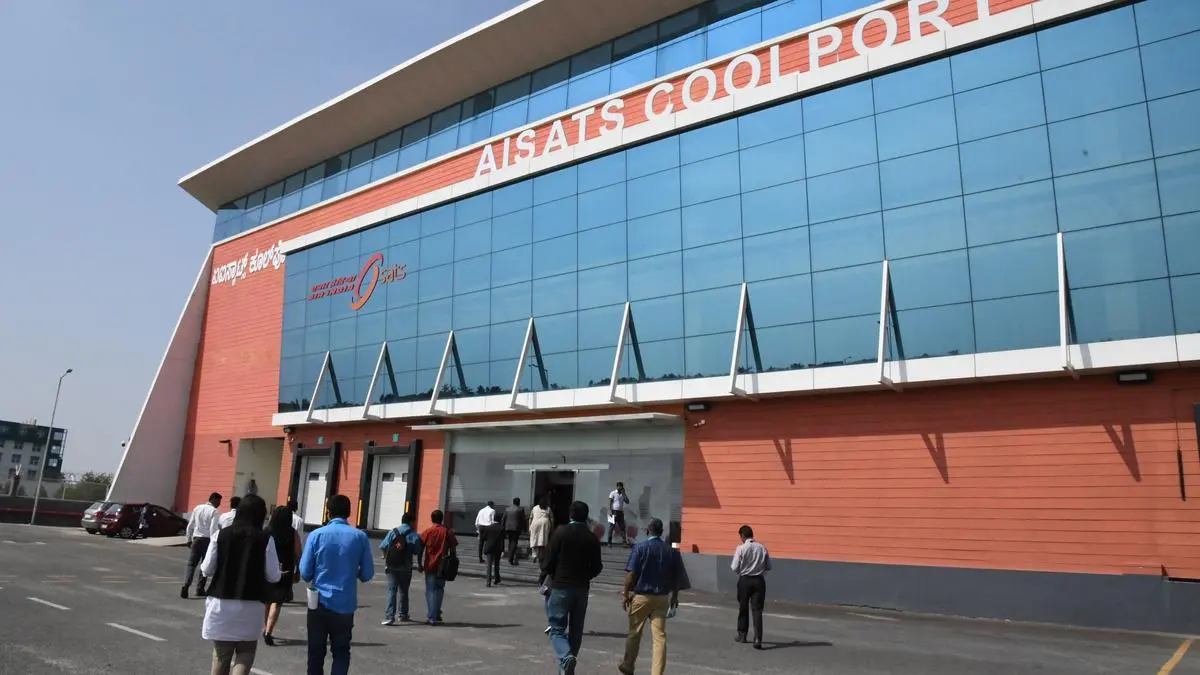By Alex Thomson
Copyright channel4

Length: 5.5kms. Cost : £800,000. Purpose: fencing to protect the local great crested newts…
Not what you’d expect in the heart of an industry notorious for high carbon pollution.
It’s one of many major surprises at a cement works near Mold in North Wales, now scheduled to become the world’s first carbon-neutral cement factory.
Cement is the glue that makes concrete work. Concrete is the substance that makes humanity work since pre-Roman times.
After water it is the most used substance on the planet. But it has a serious emissions problem.
Producing cement to hold concrete together causes huge carbon pollution – if concrete were a country, only China and the US would be causing more of it.
So why is making vital cement so filthy and so hard to decarbonise until now?
Round the back of the plant you see the problem. A vast horizontal tube at least two metres in diameter and 20 metres long.
It is a kiln. Inside this massive tube is the heart of the problem. To make cement you first heat limestone and clay inside the tube to over 1,400 degrees. High carbon emissions, but you can use renewable fuel to reduce them.
Then, the real problem. The reaction to that heating process inside the kiln is called calcination, which produces huge carbon emissions as by-product.
The solution here in North Wales is to capture the carbon from the kiln instead of sending it up the chimney, then pipeline it out under the Irish Sea into Liverpool Bay.
The pipelines exist already and so do the all-but-empty gas fields they used to service, way under the seabed for storing the carbon dioxide.
Huge potential gains
Huge positive cost savings with all that ready and waiting to be brought back into use, they say.
So the government is this week announcing the backing of this proposed solution of carbon capture here in North Wales.
The potential gains are huge – finally finding a way of making one of the world’s filthiest but most vital industrial sectors clean. But two longstanding issues stand in the way.
First is the cost issue and second is how to make carbon capture work at the scale that’s needed.
Energy Minister Michael Shanks is on hand to meet us at the plant. On cost he’s up front: £9.4 billion. But that’s across a number of key carbon capture projects going into industrial plants in the northwest and northeast of England and Scotland.
Key industrial heartlands. Key job sectors. And key areas of perceived political threat for the government from Reform UK.
Which is why the minister wants to talk jobs constantly. Certainly net zero is also a big factor in all this investment. And remember, net zero is a law, not a policy.
He talks carbon capture across these regions being the equivalent of taking four million petrol cars off our roads or 400,000 from this carbon capture site alone.
Quality jobs
But he wants to talk jobs even more. Hundreds of quality jobs in key sectors which should be traditional Labour.
So what about scaling up? Well, they believe they’ve cracked that.
Simon Willis, CEO of Heidelberg Materials UK, points to the company’s sister plant in Norway, which slashed emissions by half and still has full order books for greener but more costly cement.
But how come massively subsidised, more expensive, cement is still competitive?
The answer, says Willis, is that the culture of carbon awareness is now so deep that “green concrete” is economically attractive.
It goes like this. If you’re tendering for a contract to build a motorway, data centre, hotel, motorway, whatever, you’ll need to hit ever stricter green criteria to win your deal.
So cement is going to be your biggest cost/emission headache. Buying “green concrete “ produced with in-built carbon capture could well get you there, even though it will be pricier.
Winning the race
Willis tells us every major cement producer in Europe wants carbon capture tech in place for that reason. It’s just that this plant and the UK appear to be winning the race with the government subsidy tie-in.
The next four years will tell us if they have won, as the carbon capture site is built along with 500 construction jobs. The prize is huge: to have the world’s first carbon-neutral cement plant – something unthinkable just a few years ago.
But the price is high and alongside technological tests, the politics could get rough, with the Tories and Reform UK going cold on net zero.
Here in North Wales, they say it’s already too late to turn back and turning back, they’ll tell you, is turning your back on jobs, sustainable business and a real green market.
“The industrial opportunity of the century” is how Willis puts it.
Watch more here:
‘We need investment in offshore wind’ – environmental lawyer
‘Absurd’ to leave fossil fuels in the North Sea untapped – Kemi Badenoch
UK’s largest bioethanol plant under threat after trade deal with the US



